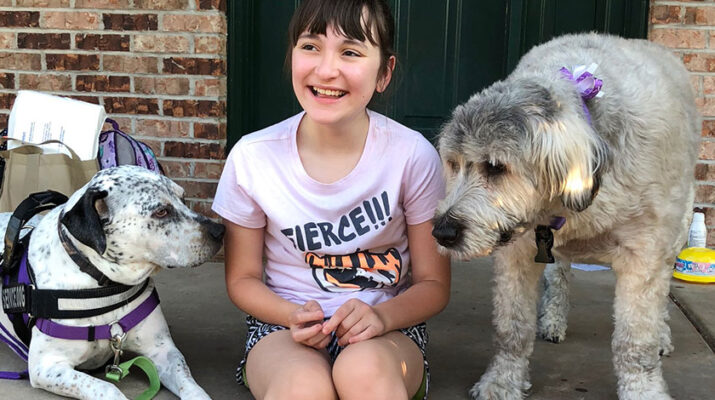Things like remote learning and masks make things difficult for a student with autism
By Deborah Jeanne Sergeant
The COVID-19 pandemic has brought a plethora of changes to everyday life, including to children newly educating at home.
For children with autism spectrum disorder, learning in the classroom was already challenging. Filtering lessons through Zoom or other remote means adds an additional layer of difficulty.
Denise Neacosia, a special education instructor, said that teaching remotely “is a huge challenge. It’s difficult for them to understand anything about the pandemic, why they’re required to wear a mask in school, how come they can’t go to see their teachers and friends. Their world has been turned upside down.”
Neacosia teaches special education students in Onondaga, Wayne, and Cayuga counties through Center for Instruction, Technology, & Innovation (CiTi BOCES) in Mexico. She also owns Kuk Sool Won Korean Martial Arts in Wolcott, Wayne County, where she instructs children and adults.
Neacosia said that the disruption in their routine is what seems to upset her special needs students the most, since children on the autism spectrum thrive on predictable schedules. The disruption continues in other ways at home, as parents, grandparents and other caregivers may be alternating care to accommodate work and educating at home. Plus, necessary services have either ceased or are offered remotely, which is less than idea.
“The majority of autistic students receive additional services like physical therapy, speech therapy in Cary, counseling and social skills practice,” Neacosia explained. “They’re not able to receive those like normal.”
Most of her students do not engage readily with virtual education because it does not seem like real life to them. While younger and less-abled students may suffer more from lacking their normal social interactions, older and more highly abled students struggle to transition from middle school to high school and make their secondary goals past graduation.
Instead of practicing social skills in the community and learning about what working a job is like, they receive much less feedback via remote learning.
Those struggling with staying focused find it even harder at home. A recent study of 3,500 families published in the Journal of Autism and Developmental Disorders reports that 64% of caregivers said that the changes brought by the pandemic “severely or moderately impacted” their child’s autism symptoms, behaviors, mental wellbeing or related challenges. Further, 75% of parents reported that they felt extreme or moderate stress because of the disruption to their lives.
“While many students – not just those with autism spectrum disorder – are struggling with remote learning, it can be extra challenging for our kids,” said Jean Leiker, vice president of the Central New York Affiliate of the Autism Society. “Many have assigned aides or teaching assistants at school to help with focus and academic modifications, and they may not have the same immediate access to these resources at home.”
She added that some school districts have allowed children with autism to attend school in person on more days than typically abled children.
Andy Lopez-Williams, founder and clinical director at ADHD and Autism Psychological Services and Advocacy in Syracuse and Utica, called current times “one of the most challenging times for all students, and students with developmental disabilities in particular. The needs of children with autism can vary greatly since it is a highly heterogeneous disorder. This can make it difficult to develop educational plans for children with autism even in usual circumstances.”
The one-on-one attention is what he said children with autism need to stay focused, on-task and able to complete their work. In addition, many children with autism have other learning issues and may have other disabilities that create further barriers for learning.
“We will witness the effects of this pandemic on the learning and socialization of children with autism for years to come,” Lopez-Williams said. “This is why it is crucial for children to be returned to in-person learning safely and as soon as possible.”
Schooling at home may seem a big relief and a welcomed retreat with no bullies and the comfort of home. However, the lack of socializing opportunities is especially harmful for children with autism. For many of them, understanding social cues like facial expressions is not intuitive. They need practice that is hard to get through Zoom.
“It will take creativity and ambition on the part of educators to address the negative aspects of virtual learning on children in general and children with autism in particular,” Lopez-Williams said. “And, when children return to in-person learning, it is crucial that more robust efforts are employed to help children catch up in their educational and socioemotional learning.”
Photo: Devyn Pereira is a student at Hilton Central School District. “With remote learning for Devyn, you might as well not do it,” her mom says. On the screen, it’s like a boring video they’re making her watch.”

